GA-ASI (General Atomics Aeronautical Systems) has unveiled the first member of the Gambit family of unmanned aerial vehicles, the XQ-58A Valkyrie reconnaissance jet drone. This aircraft is part of the United States Air Force’s (USAF) secret programme, but it is unrelated to the OBSS (Off-Board Sensing Station) programme. The XQ-58A Valkyrie is an autonomous unmanned aircraft with minimal observability that can carry out a variety of missions like reconnaissance, surveillance, research, and other operations. It is designed to improve the capability of aircraft missions while reducing expenses and risks to troops.
There is little information available regarding OBSS and the XQ-67A. OBSS is one of several American programmes on jet unmanned aerial systems (UAS) or unmanned combat air vehicles (UCAVs).
The most ambitious programme is the current Collaborative Combat Aircraft (CCA) programme, which develops new multi-role sixth-generation fighters known as NGAD. CCA drones are designed not just to accompany manned fighters but also to function as self-deploying assets.
OBSS is led by the Air Force Research Laboratory (AFRL), the USAF’s premier research and development centre. The OBSS development programme aims to validate novel technologies, strategies, and production processes in high-performance jet UCAVs.
This is similar to the development and testing of the Northrop Grumman X-47B carrier-based jet by the Defence Advanced Research Projects Agency (DARPA). Indeed, the letter “X” in the titles XQ-67A and X-47B stands for experimental aircraft (demonstrators).
Within OBSS, AFRL decided between two designs: Kratos’ XQ-58A Valkyrie and GA-ASI’s Gambit drone family.
Kratos announced in 2021 that OBSS drones are meant to be economical and highly adaptable UAS with conventional takeoff, landing, and jet propulsion. Kratos’ OBSS incorporates innovative manufacturing techniques that improve UAS performance for missions with expanded sensors for manned jet aircraft and the ability to accommodate a large volume of weapons to function as an extended ammunition supply for manned aircraft. OBSS is a new addition to Kratos’ low-cost Autonomous Collaborative Platforms (ACP) family, designed to use guns, sensors, and other effects to create an economical forward-deployed battle force.
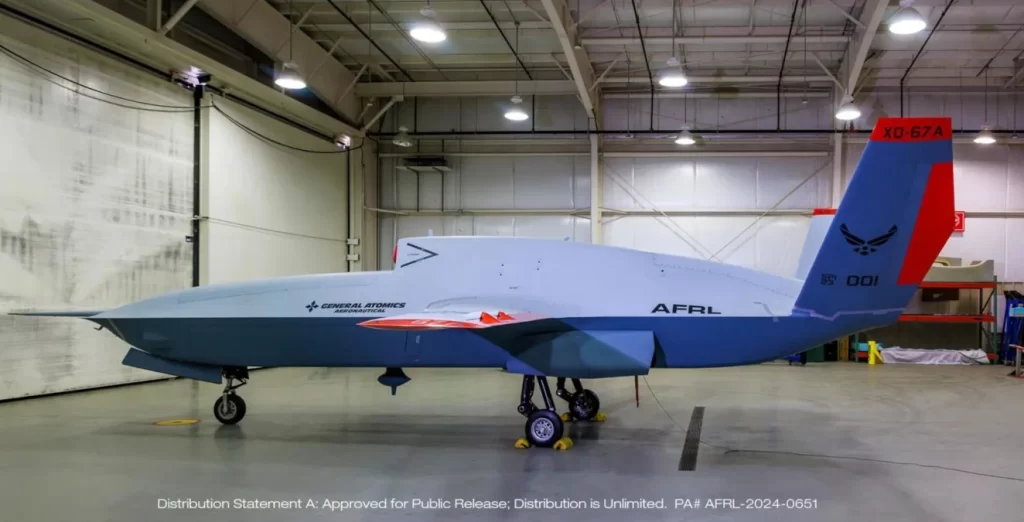
In a nutshell, the purpose of OBSS is to create powerful and affordable jet UCAVs. Their mission is to support and defend manned aircraft. OBSS anticipates high combat losses and ever-changing USAF requirements. As a result, rapid, affordable, and customisable production is critical.
The relationship between OBSS and CCA is unknown; OBSS is most likely a supporting technical programme designed to assist the USAF in better defining the requirements for the “final” CCA. Individual programmes, on the other hand, are less important. They simply try to help address the serious difficulties facing the United States Air Force.
Potential rivals are gradually weakening the United States’ military edge. The United States still has a qualitative advantage but lacks numbers in both staffing and equipment.
The USAF had 134 fighter squadrons in 1991, but currently just 57 or, according to the Heritage Foundation – even lower, Just 54. Typically, each USAF squadron consists of 24 multi-role fighters.
Due to its lengthy and costly training, the USAF simply cannot develop and train enough manned fighter aircraft to meet its requirements.
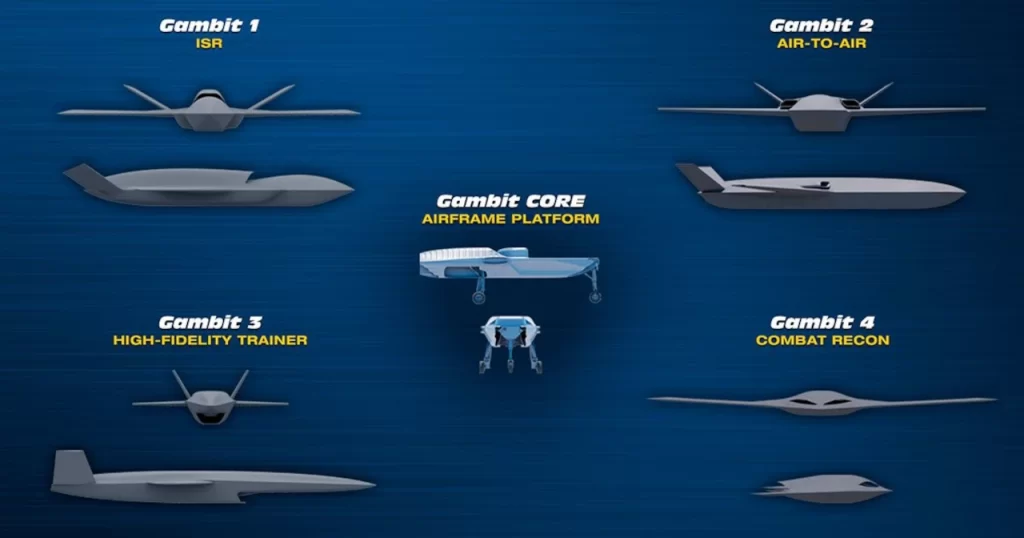
The shared platform reduces expenses and complexity for the manufacturer. Different features and options provide the buyer with a choice and add value. Drones’ expendability is important, but so are mass manufacturing and adaptability. The USAF must not only match or, preferably, outperform the opponent in terms of quantity but also respond to new threats continuously. Introducing new skills should not take years but months or weeks.
The Mitchell Institute think tank recently carried out a series of combat simulations using CCA deployment. The simulations were designed to demonstrate that if the USAF deploys CCA in big numbers, it forces China to squander numerous missiles, creates favourable confusion in the battle environment, and becomes a cost-intensive factor for the opponent. The comparatively low cost of CCA, under $15 million per unit, mass production, expendability, and ease of deployment from ‘field’ airfields were all critical success factors.
GA-ASI refers to Gambit as a family of four big unmanned aircraft. The presented XQ-67A is the previously announced Gambit 1, a drone built for intelligence, surveillance, and reconnaissance (ISR) tasks that can stay airborne for extended periods and cover large areas.
In its basic form, the XQ-67A resembles the GA-ASI Avenger aircraft, the Boeing MQ-25 Stingray aerial tanker, and the XQ-58 Valkyrie. Details about the XQ-67A have not been revealed. However, C. Mark Brinkley, a GA-ASI official, told The War Zone portal that the company is thrilled to introduce the XQ-67A Off-Board Sensing Station (OBSS). There is much discussion regarding UCAVs and what the future may hold. However, as people learn more about the XQ-67A OBSS and how the Air Force Research Laboratory and General Atomics approached the project, they will notice that it is unlike anything they have seen before, he said. Brinkley explained that the XQ-67A is an AFRL programme, and GA-ASI was chosen to design, build, and fly the new aircraft.
The description of the other three proposed drones by GA-ASI in the Gambit family gives a clearer picture.
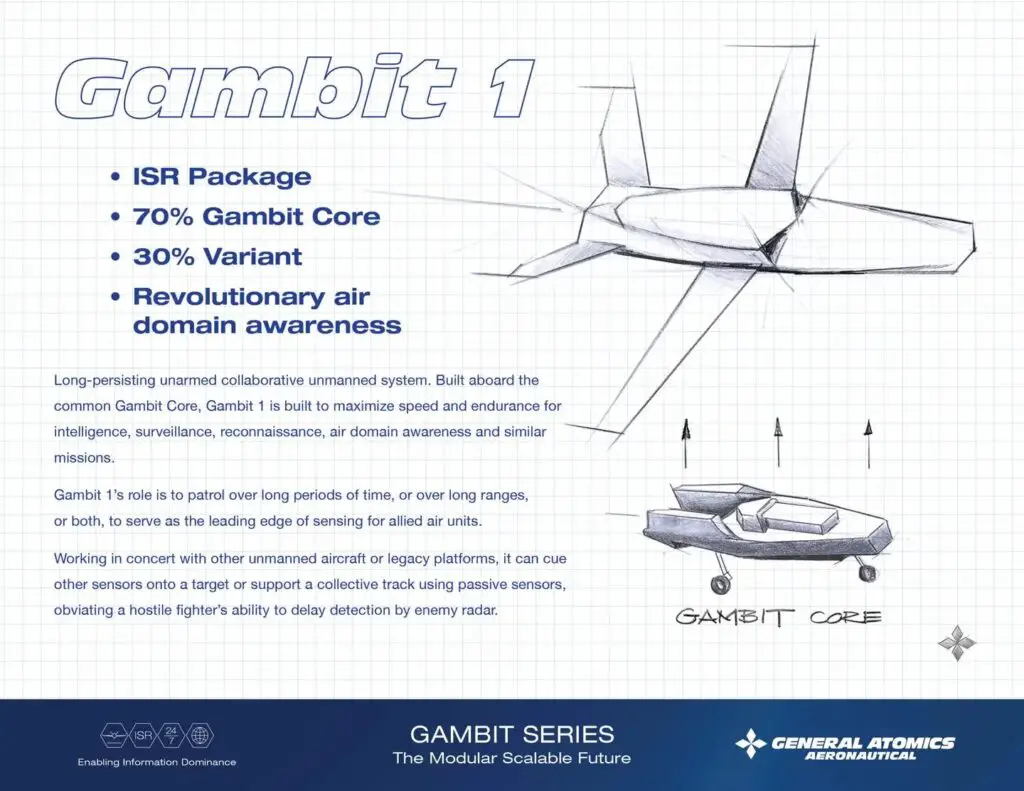

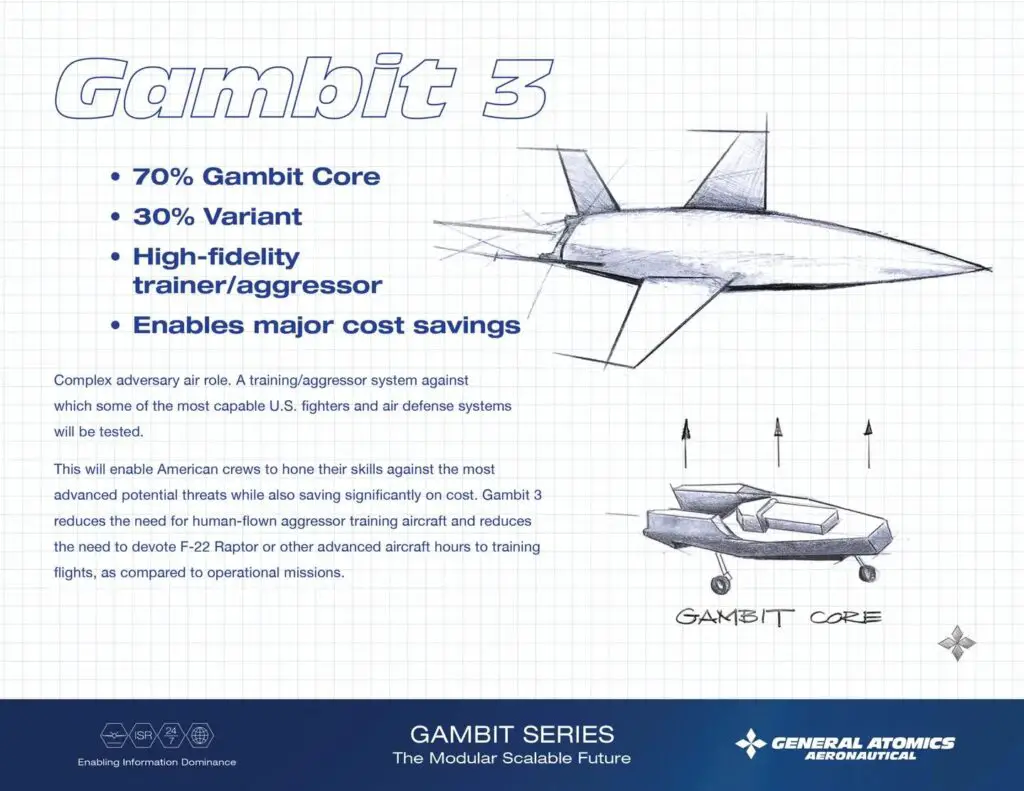
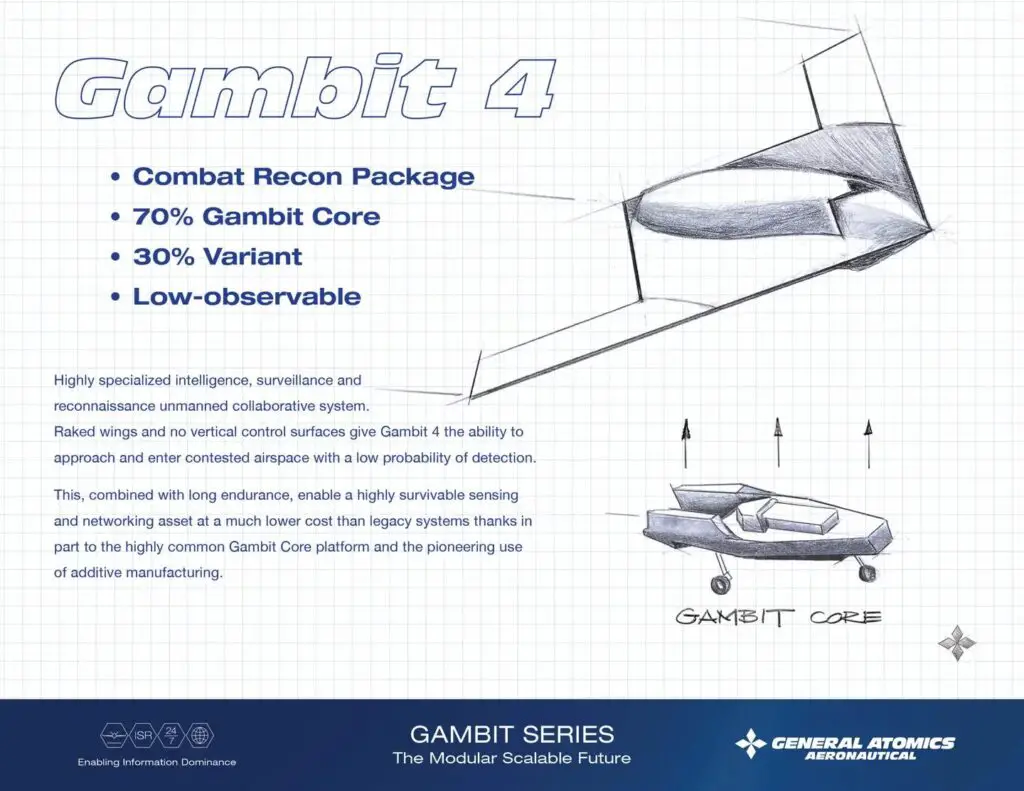
The second intended drone, Gambit 2, is identical to the first but carries more air-to-air missiles, resulting in a shorter flight duration. The advanced training-oriented Gambit 3 will teach human pilots how to operate and engage in combat with jet UCAVs. The flying-wing Gambit 4 will continuously monitor enemy troops and provide early warning, such as detecting hostile aircraft launches or long-range weapon firing.
The trick lies in network-centric operations. Specifically, Gambit 1 and Gambit 2 drones are designed to operate in high numbers across broad areas. Individual drone sensors will overlap, allowing several drones to identify threats from various perspectives and capture stealthy enemy aircraft with greater reliability. Meanwhile, Gambit 4 will move discreetly at great elevations.
These pieces will be linked by a robust communication network, not only among line-of-sight aircraft but also by the next generation of communication satellites. For example, the F-35A aircraft will collect all drone data and display it to the pilot in a visually appealing style. The F-35’s enhanced autopilot will transform the pilot into an operator focused primarily on tactics, weapon system control, sensors, and drones.
Drones have an advantage not just in mass production but also because they do not kill anyone if lost. The adversary’s elite – the pilots – can soon be depleted in a confrontation. On the other side, Americans can quickly replace lost drones.
